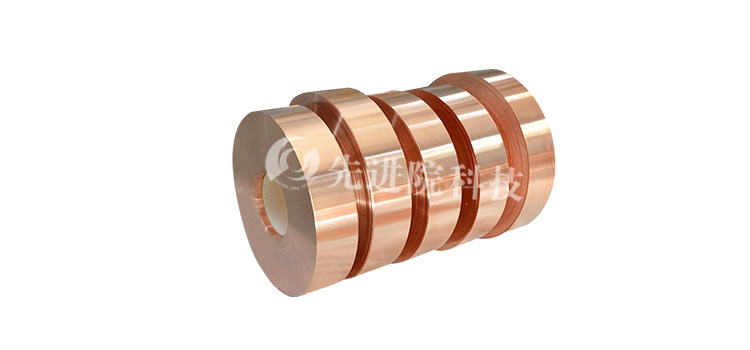

Hotline:0755-22277778
Tel:0755-22277778
Mobile:13826586185(Mr.Duan)
Fax:0755-22277776
E-mail:duanlian@xianjinyuan.cn
Improve the substrate material, add pre coating, copper plating or nickel plating, with copper plating having a better effect than nickel plating.
1. Copper foil is directly tinned with a thickness of usually 5-8 μ m. After being stored for a period of time, the coating color becomes dark and black.
2. In comparative experiments, purple copper foil (pure copper) was plated with tin using the same process and stored in the same environment for much longer periods of timeTin plated brass foil.
3. Comparative experiments have shown that the substrate material has a significant impact on the tin plating layer. Before tin plating, a layer of copper with a thickness of 2-4 μ m (some say greater than 0.5 μ m is sufficient) can greatly improve the corrosion resistance of the coating.

Tin plating additives have a significant impact on the anti discoloration ability
The use of different types of additives can affect the anti discoloration ability of the tin plating layer, as well as the crystallization status and carbon content of the tin plating layer.
Post treatment during electroplating process, forCopper foil tin plating layerThe ability to resist discoloration has an impact
Pre copper plating first, divided into two groups for control experiments. The experimental results indicate that after post-treatment to remove residual plating solution in the coating or substrate, it can be stored for one year without color spots. Color spots were found after 4 months without neutralization and post-treatment.
There is no post-treatment, which means the plating solution is not cleaned thoroughly.
Test method for anti discoloration ability of tin plated copper foil:
Place the copper foil substrate tin plated product in a 155 ° C oven and determine the color change time of the coating at high temperatures through regular observation. Comparative experiments have found that samples that do not change color within 16 hours do not change color even after being exposed to industrial atmospheric environments for 1 year. High temperature can accelerate the diffusion of residual corrosive substances in zinc and substrate coatings.
What method is used for tin plating on copper surface?
Tin plating on the surface of copper foil is used to prevent oxidation of copper bars and improve the contact surface of copper foil connections,
Moreover, the bonding layer between tin metal and copper forms an alloy, which enhances the adhesion of the copper plating layer. In addition, tin metal has good conductivity. Good density, high smoothness, and enhanced wear resistance of the plated parts. The simple explanation for tin plating is to transfer tin to the components you want through current, and there are generally two types of bath solutions; During operation, power is supplied through a power supply (rectifier), and the plated components are placed on the cathode with tin bars as the anode,
As an electrolyte, the bath solution converts the tin on the anode into stannous ions, which deposit on the components through the electrolyte. This is the process of electroplating. In the electroplating process, because the physical properties of different metal ions are different, additives are used to adjust the brightness and density of the metal according to different requirements.
If you need this product or would like to learn more about related issues or product information, please contact us. We will solve your problems and provide services:


Advanced Institute (Shenzhen) Technology Co., Ltd, © two thousand and twenty-onewww.avanzado.cn. All rights reservedGuangdong ICP No. 2021051947-1 © two thousand and twenty-onewww.xianjinyuan.cn. All rights reservedGuangdong ICP No. 2021051947-2